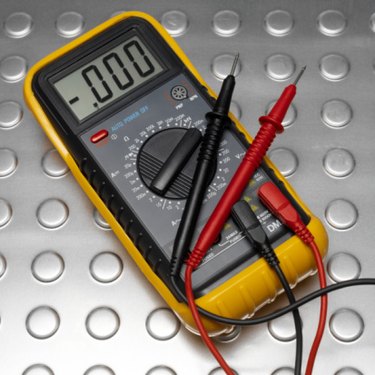
An ohmmeter, a device used to measure electronic resistance, is an ideal instrument for testing for gold. Named for the ohm, the basic unit employed for calculating electronic resistance, ohmmeters use a signal current to apply voltage to a resistance in order to determine an object's resistivity. Because gold elements possess a quantifiable level of electrical resistance, ohmmeters provide a simple and feasible method for determining their identity.
Step 1
Turn off and disconnect the ohmmeter before testing the object. It's important that the signal is completely blank before testing, so as to ensure an accurate measurement. Conduct the test away from other electronics, such as computers or televisions.
Video of the Day
Step 2
Turn on the ohmmeter. Be certain that the dial of the device is set to measure in ohms. On most ohmmeters, this would mean that the "On" light next to the ohm sign is lit up. If it is, then you are ready to test for gold.
Step 3
Place the ohmmeter's black wire on one end of the object, and the red wire on the other end. Read and document the resistivity of the object in ohms.
Step 4
Measure the area of the object. Convert the value into meters squared. Multiply the area in meters squared by the resistivity in ohms. Compare this new value to the actual resistivity level of gold, which is 2.44 times 10^-8 ohms. If the values differ 5 percent or less, then the object is probably gold.
Video of the Day